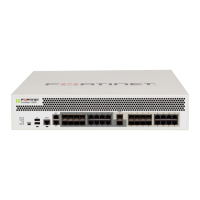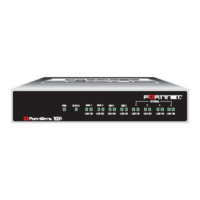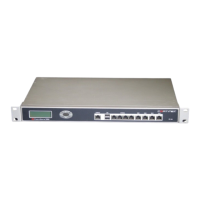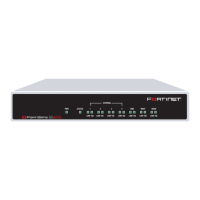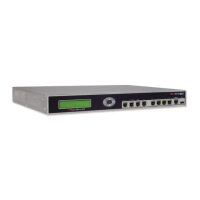Configuring the FortiGate unit NAT/Route mode installation
FortiGate-60 series and FortiGate-100A FortiOS 3.0 MR4 Install Guide
01-30004-0266-20070831 33
To disable ping administrative access from the FortiGate CLI
1 Log into the FortiGate CLI.
2 Disable administrative access to the external interface. Enter:
config system interface
edit <interface>
unset allowaccess
end
NAT/Route mode installation
This section describes how to install the FortiGate unit in NAT/Route mode. This
section includes the following topics:
• Preparing to configure the FortiGate unit in NAT/Route mode
• DHCP or PPPoE configuration
• Using the web-based manager
• Using the command line interface
• Connecting the FortiGate unit to the network(s)
• Configuring the networks
Preparing to configure the FortiGate unit in NAT/Route mode
Use Table 8 on page 33 to gather the information you need to customize
NAT/Route mode settings.
You can configure the FortiGate unit in two ways:
• The web-based manager GUI is a complete interface for configuring most
settings. See “Using the web-based manager” on page 34.
• The command line interface (CLI) is a complete text-based interface for
configuring all settings. See “Using the command line interface” on page 36.
The method you choose depends on the complexity of the configuration, access
and equipment, and the type of interface you are most comfortable using.
Table 8: NAT/Route mode settings
Administrator Password:
Internal
IP: _____._____._____._____
Netmask: _____._____._____._____
WAN1
IP: _____._____._____._____
Netmask: _____._____._____._____
WAN2
IP: _____._____._____._____
Netmask: _____._____._____._____
DMZ
IP: _____._____._____._____
Netmask: _____._____._____._____
DMZ1
(FortiGate-100A
IP: _____._____._____._____
Netmask: _____._____._____._____
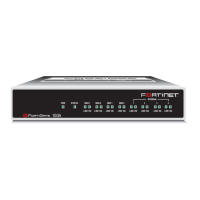
